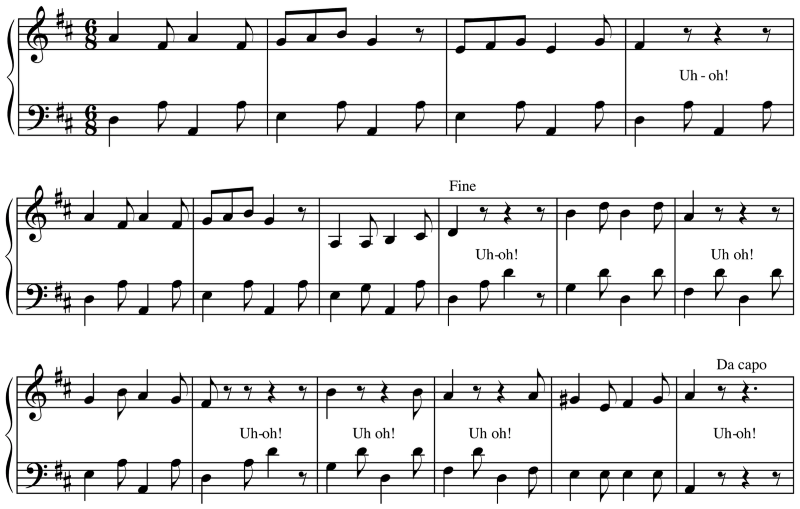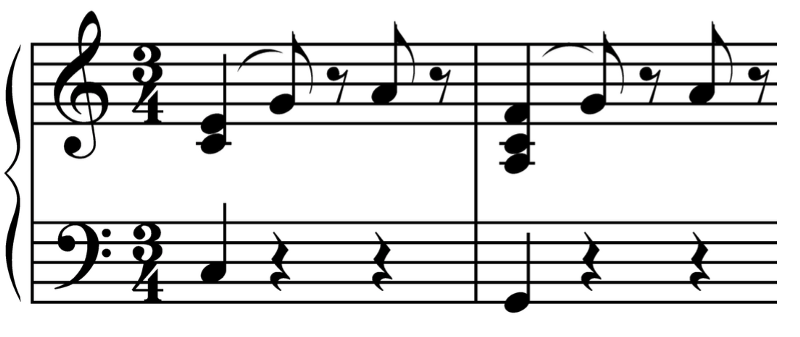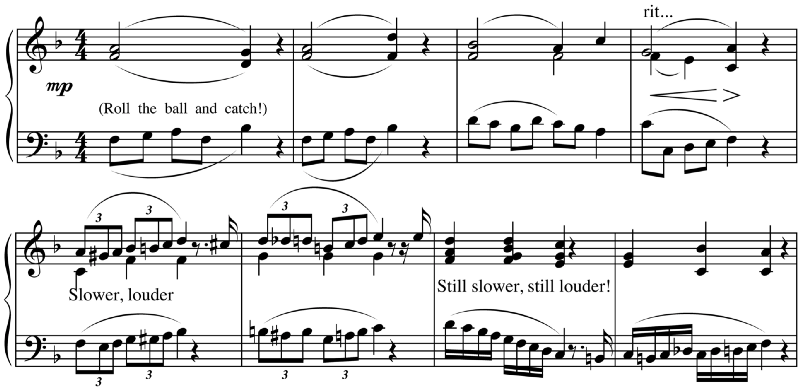Most Dalcroze lessons are made up of a series of games centered around a topic, and often leading up to a particular piece of music. But many of these exercises work well on their own, so I thought I’d share a list of some of my favorite “quick” games that work well as starters, interludes or as part of a broader lesson on a concept.
These are games that I think are also great if you’re just getting involved in Eurhythmics, or just starting to try and use some Eurhythmics activities in your teaching. I’ve included sample music as well as recordings of improvisations for most of the games. Feel free to use these with your classes, or try them yourself!
Stopping and Starting Quick Reaction
“Walk with the music, when the music stops, you stop!”
This is a classic quick reaction game, one of the main kinds of exercises we use in Dalcroze Eurhythmics classes. The students respond as immediately as they can to the music’s stopping and starting by alternating walking and clapping.
Broken Record Melody
“Walk with the melody, when the melody gets stuck on one note, freeze!”
This is closely related to the stopping/starting game, but teaches students to really listen to the pitch element of music!

Variations:
- When frozen, sing the solfège of the stuck note as soon as you know it!
- Walk backwards instead of freezing.
Here’s a recorded improvisation you can try it with:
Uh-Oh (Quick Reaction Direction Change)
“Skip in a circle with my music, when I say ‘Uh-oh’ go the other way!”
The game teaches us to both make quick changes in our momentum, and also to listen predictively. By calling “uh-oh” at phrase endings, and varying the length of the phrases in a logical way, students begin to actively imagine the music that will come next, rather than just listening passively.

Here’s an audio recording you can try it with yourself:
Here’s a video of me teaching a variant of the game, where instead of calling out “uh-oh” I play a quick little trill on the piano, and add another cue as well!
Bouncing Ball Tempo-Meter Follow
“Bounce & catch the tennis ball with my music”
This game teaches students to be sensitive to changes of tempo (and of meter in more advanced versions). It also helps make them aware of balancing time, space (how close or far from the ground they are) and energy (how much force they need to bounce the ball with). This is a central concept in Dalcroze’s teaching, that is present in some way in every Dalcroze experience.

You can also create variants for different meters:

- in 3/4 bounce, catch with one hand, and on the third beat pass it to your other hand
- in 4/4 bounce, catch with one hand, toss it up, and catch it with the other hand
- in 5/4 bounce, catch with one hand, toss it up, catch it with the other, and pass it back to the other hand
And, as a variant, students can bounce their tennis ball to a partner instead. (For added challenge, both partners can bounce tennis balls to each other at the same time!)
Roll and Catch the Ball
“Roll and catch the ball with the music”
Another classic time-space-energy game, students roll a ball back and forth (while seated) to each other, adjusting the distance between them as the tempo changes.


Jumping Tempo
“Jump so you land on the fourth note I play”
A delightful quick reaction game of changing tempos that is a great way to wake students up at the beginning of a Eurhythmics lesson.
Conclusion
I hope you’ve enjoyed these games, I certainly love teaching them and doing them myself as a student. Let me know if you find these helpful, and if so I’ll try and create a volume two!

